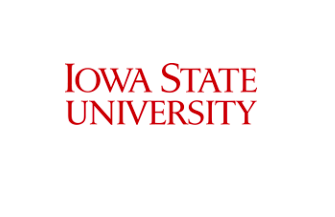Tackling GAPS in graduate students' professional skills
How one professor’s industry experience generated an entire IGE program
In early 2024, the IGE Hub team sat down with Dr. Shan Jiang, project PI and associate professor in the Materials Science and Engineering Department at Iowa State University and Education graduate student, Yiqui Liang, to hear about their innovative work on the Graduate for Professional Skills (GAPS) program.
Though he wanted to be a professor, Dr. Jiang first went from his PhD program into industry. The project came from his personal experience in a Six Sigma project that he “hated.” Like some other technical scientists, he was less interested in navigating projects with colleagues than directly engineering products. It was only later when he realized that communication and collaboration skills were critical to any role he pursued.
GAPS Inspiration
When Dr. Jiang became an assistant professor at Iowa State University in 2016, he was eager to mentor students. Among each mentee, he noticed gaps in professional skills, such as project management, team collaboration, and effective writing. He recalled his own experience and reflected on the importance of developing professional skills prior to graduating– no matter the sector of employment. From there, he began researching case studies that resonated with his students’ situations.
The project took form just before the onset of the Covid-19 pandemic in the U.S. Beginning with the project charter, he designed one lecture per week, starting with competencies in reflective writing, then expanded to different sections. He successfully submitted his proposal to the National Science Foundation with an award period running from summer 2020 through summer 2024.
Like other awardees, the project experienced delays due to CoVid-19. Yet two remarkable strategies set this program apart.
Recruitment Workshops
To ensure a consistent flow of students, the project team started hosting recruiting events before the start of each semester, which they rebranded GAPS “workshops.” Flyers were distributed and lunch was provided. Distinguished panelists, such as university faculty members and departmental deans, were invited to lead the event. When students signed up, the team was able to generate a mailing list from the IT department.
Student Testimonials
Dr. Jiang wanted to capture student experiences directly after program completion. In lieu of a final exam, he allocates one class hour for students to sign up for time slots to share their experiences. Unique to the university is the new Student Innovation Center, opened in 2020, with a media lab available to faculty and students. Dr. Jiang’s team prepared several questions ahead of time and with the help of the media lab team, students signed up for time slots to record a short message. The communications team produced and edited video testimonials, which are now available on Youtube.
Soon, the media lab team began experiencing a strain on their time and resources. Fortunately, Dr. Jiang was able to hire a graphic designer and also found time to learn to edit recorded video. He plans to continue hosting the semesterly GAPS workshop and the shared experience “final project” to inspire more students to join the program.
Watch student testimonials here
What’s Next for GAPS?
These two strategies led to cohorts from diverse backgrounds and disciplines. While this project has made significant strides, Dr. Jiang is striving for even more engagement. One component of the project is to establish a learning community where students collaborate. Yet, he finds that students struggle with networking and connecting outside of the classroom. As the project nears its end, sustainability, and dissemination, within and beyond his institution, is top of mind. Dr. Jiang believes this program can narrow the professional skills divide that he and faculty nationwide, observe in newly graduated students. He hopes students will come to like project coordinating so they will experience a smoother transition to the workforce than he did.

